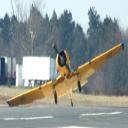Yahoo Answers is shutting down on May 4th, 2021 (Eastern Time) and beginning April 20th, 2021 (Eastern Time) the Yahoo Answers website will be in read-only mode. There will be no changes to other Yahoo properties or services, or your Yahoo account. You can find more information about the Yahoo Answers shutdown and how to download your data on this help page.
Trending News
Does anyone know what the difference in pressure is between regular standard atmospheric pressure @ sea level ?
And the pressure inside an airplane (in terms of psi or otherwise)???
key words here are standard atmospheric pressure.. 29.92 inHg
5 Answers
- TechwingLv 71 decade agoFavorite Answer
That depends on the aircraft altitude and cabin pressurization.
For an airliner in the cruise phase of flight, the cabin altitude is likely to be around 5000-8000 feet, roughly the same as Denver or Telluride, Colorado (respectively). In terms of actual air pressure, this means that the cabin pressure will be about 2.5 to 3.8 psi lower than normal atmospheric pressure at sea level. In absolute terms, sea level pressure is 14.696 psi, and the cabin pressure will be between 12.23 and 10.91 psi.
- Anonymous1 decade ago
Actual pressure at sea level varies with the weather but the standardised level is set at 1 bar (14.7 psi).
As you climb then air pressure decreases (which is how an aircraft's altimeter works).
But of course on any particular day the air pressure depends on the weather which is why an aircraft calibrates it's altimeter just before take-off for the actual local air pressure so it reads the correct reading at that time. Then on approach to the destination airport the control tower calls the plane and gives the new local pressure (referered to as "QNH)") and the pilot resets the alimeter again so it reads correctly as he lands.
Finally, cabin pressure. As an aircraft climbs the cabin pressure is allowed to drop in line with the atmospheric pressure until it gets to about 8,000-10,000ft. At this point the cabin pressure is locked and as the aircraft climbs up to it's full cruise altitude (e.g. 35,000ft) the cabin is pressurised to maintain the pressure at 10,000ft. This requires a strong cabin structure.
As an aside, one of the benefits of the new Boeing Dreamliner is that it will maintain cabin pressure at sea level (or at the point of take off). This will remove all the ear-popping that goes on in normal aircraft and reduce travel fatigue for passengers. The reason other aircraft don't do it already is the high cabin strength required to do this - but the new Dreamliner has a carbon reinforced cabin.
- VolleyholicLv 51 decade ago
At a cruising altitude of 39,000 feet, a Boeing 767's cabin will be pressurized to an altitude of 6,900 feet.[1]
Cabin altitude is not normally maintained at average mean sea level (MSL) pressure (1013.25 hPa, or 29.921 inches of mercury) throughout the flight, because doing so would cause the designed differential pressure limits of the fuselage to be exceeded.
At 39,000 feet, the cabin pressure would be automatically maintained at about 6,900 feet (450 feet lower than Mexico City), which is about 11.5 psi of atmosphere pressure (76 kPa).[10]
- How do you think about the answers? You can sign in to vote the answer.
- 1 decade ago
it depends upon the brometer which helps to know the pressure and wind....
Source(s): yogavbarzillai@hotmail.com




